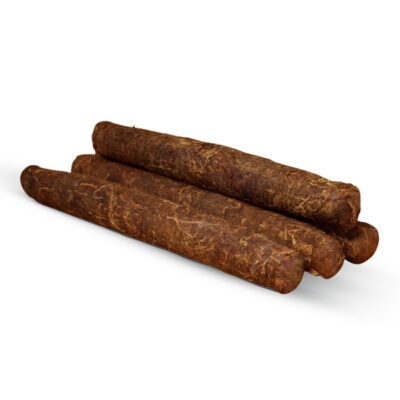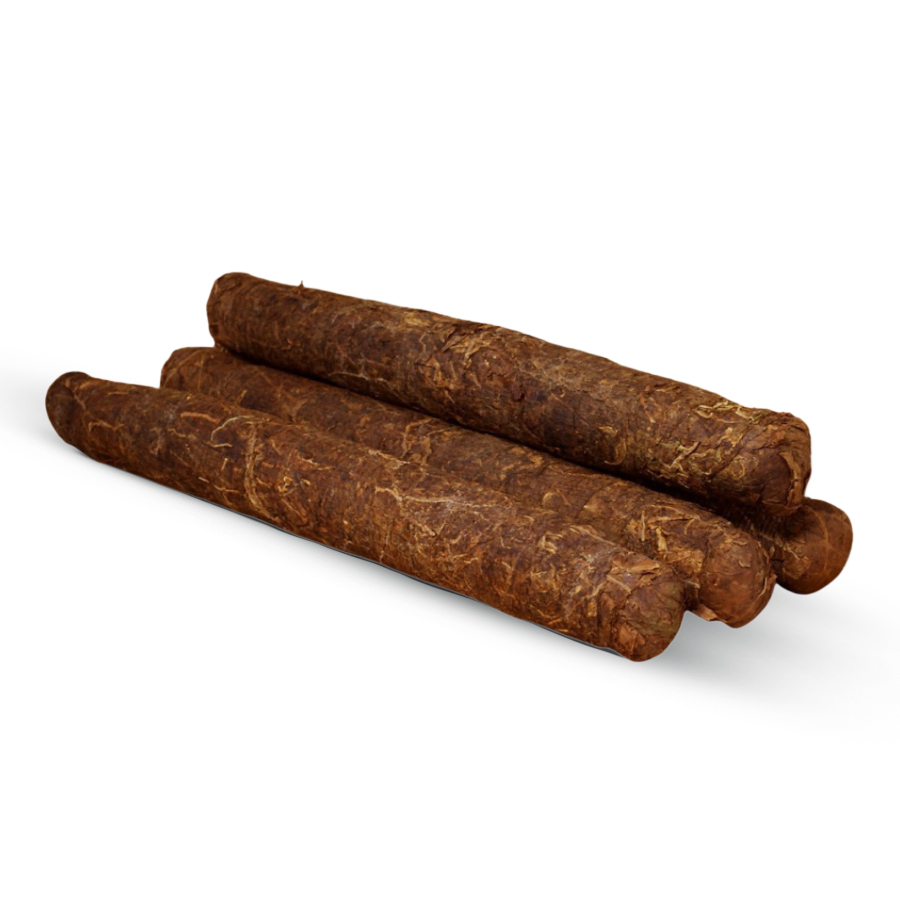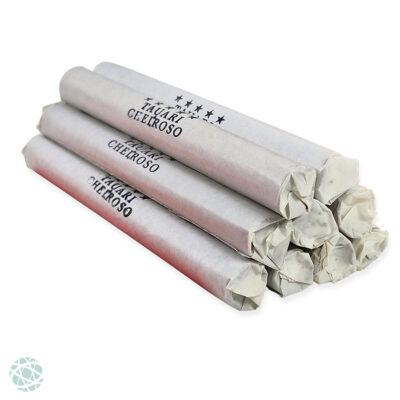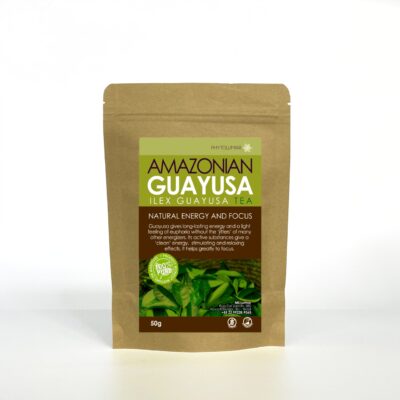Mapacho: Der heilige Tabak von Peru
Einführung in Mapacho:
Mapacho, wissenschaftlich als Nicotiana rustica bekannt, ist eine starke Tabaksorte, die in Südamerika heimisch ist. Besonders wichtig ist er in Peru, wo er traditionell von Schamanen und indigenen Gemeinschaften für spirituelle und medizinische Zwecke verwendet wird. Im Gegensatz zum herkömmlichen Tabak, der in handelsüblichen Zigaretten verwendet wird, ist Mapacho unverarbeitet und natürlich, so dass er seine kraftvollen Eigenschaften und seine kulturelle Bedeutung beibehält.
Botanische Informationen
Wissenschaftliche Klassifizierung:
Königreich: Pflanzen (Plantae)
Klade: Bedecktsamer (Angiospermen)
Klade: Eudikotyledonen
Ordnung: Nachtschattengewächse
Familie: Nachtschattengewächse
Gattung: Nicotiana
Spezies: Nicotiana rustica
Morphologische Merkmale:
Wachstumsgewohnheit:
Nicotiana rustica ist ein robustes, einjähriges Kraut, das in der Regel eine Höhe von 1 bis 2 Metern erreicht. Sie gedeiht in verschiedenen Umgebungen, von tropischen Tieflandwäldern bis hin zu Hochgebirgsregionen, was ihre Anpassungsfähigkeit unter Beweis stellt.
Laub:
Die Blätter von Nicotiana rustica sind groß, breit und eiförmig, mit einer klebrigen Textur aufgrund von Drüsentrichomen, die eine harzige Substanz absondern. Die Blätter sind dunkelgrün und können bis zu 50 cm lang werden. Sie sind der wichtigste Teil der Pflanze, der für traditionelle Zwecke verwendet wird.
Blumen:
Die Pflanze bildet Büschel von röhrenförmigen, gelbgrünen Blüten, die weniger als 2 cm lang sind. Diese Blüten sind weniger auffällig als die anderer Nicotiana-Arten, sind aber für den Fortpflanzungsprozess der Pflanze unerlässlich. Sie blühen vor allem am frühen Morgen und am späten Abend.
Obst:
Die Frucht von Nicotiana rustica ist eine kleine, kapselartige Struktur, die zahlreiche winzige Samen enthält. Wenn sie reif sind, trocknen die Kapseln aus und brechen auf, wodurch die Samen freigesetzt werden, um sich zu verbreiten.
Traditionelle und schamanische Verwendungen
Energetische Säuberung:
Eine der tiefgreifendsten Anwendungen von Mapacho in traditionellen und schamanischen Praktiken ist die energetische Reinigung. Schamanen nutzen Mapacho, um den Energiekörper von Menschen zu reinigen und zu schützen. Diese Praxis beinhaltet das Ausblasen des Rauchs oder die Verwendung des Tabaks auf andere, nicht brennbare Weise, um negative Energien und Wesenheiten zu entfernen. Der Glaube ist, dass Mapacho die Kraft hat, die Aura zu reinigen und spirituellen Schutz zu bieten.
Spirituelle Opfergaben:
Mapacho wird auch als Opfergabe für Geister und Gottheiten verwendet. Bei Zeremonien ist es üblich, Mapacho als Geschenk an die Geisterwelt zu überreichen, um Segen, Führung und Schutz zu erhalten. Die heilige Natur des Mapacho macht es zu einer Brücke zwischen der physischen und der spirituellen Welt.
Zeremonieller Kontext:
In schamanischen Zeremonien spielt der Mapacho eine zentrale Rolle. Es wird verwendet, um einen heiligen Raum zu schaffen, spirituelle Wesenheiten anzurufen und die Verbindung zwischen dem Schamanen und der Geisterwelt zu verbessern. Der Schamane kann Mapacho verwenden, um Reisen in veränderte Bewusstseinszustände zu erleichtern, in denen er Einsichten und heilende Führung erhalten kann.
Medizinische Verwendung:
Traditionell wird Mapacho auch wegen seiner medizinischen Eigenschaften verwendet. Er wird zwar nicht eingenommen, aber seine stark antiseptischen und entzündungshemmenden Eigenschaften werden für verschiedene äußere Anwendungen genutzt. So bereiten Schamanen beispielsweise Mapacho-Aufgüsse zu, um Wunden zu waschen oder Hautinfektionen zu behandeln, und machen sich so seine natürlichen Heilkräfte zunutze.
Geschichte im traditionellen und schamanischen Gebrauch
Historischer Hintergrund:
Die Verwendung von Mapacho reicht Tausende von Jahren zurück, und schon in den alten Kulturen der Anden und des Amazonasgebiets wurden Hinweise auf seine Bedeutung gefunden. Indigene Stämme wie die Shipibo-Conibo und die Ashaninka haben Mapacho lange Zeit als heilige Pflanze verehrt. Sie ist tief in ihre Kosmologie und ihr tägliches Leben eingebettet und symbolisiert die Verbindung zwischen den Menschen und dem Göttlichen.
Kulturelle Bedeutung:
Für viele indigene Gemeinschaften ist Mapacho mehr als nur eine Pflanze; sie ist ein spiritueller Verbündeter. Ihre Verwendung unterliegt strengen Ritualen und Protokollen, die von Generation zu Generation weitergegeben werden. Diese Praktiken gewährleisten, dass die Kraft von Mapacho respektiert und richtig genutzt wird. Der Anbau, die Zubereitung und die Verwendung von Mapacho werden oft von Gebeten und Anrufungen begleitet, was ihren heiligen Status widerspiegelt.
Schamanische Abstammungslinien:
In schamanischen Abstammungslinien wird das Wissen über die Arbeit mit Mapacho oft vererbt. Die Lehrlinge lernen die komplizierten Rituale und Techniken von ihren Ältesten und stellen so sicher, dass die Weisheit erhalten bleibt. Schamanen betrachten Mapacho als einen meisterhaften Pflanzenlehrer, der ihnen Wissen, Heilung und Schutz vermittelt.
Ökologischer Kontext und Kultivierung
Geografische Verbreitung:
Nicotiana rustica ist vor allem in Südamerika verbreitet, wobei ein bedeutender Anbau in Peru stattfindet. Die Pflanze bevorzugt gut durchlässige Böden und gedeiht sowohl in tropischen als auch in subtropischen Klimazonen. Sie wird häufig von indigenen Gemeinschaften in kleinen, heiligen Parzellen angebaut.
Anbaupraktiken:
Der traditionelle Anbau von Mapacho erfolgt nach biologischen Anbaumethoden. Das Saatgut wird in sorgfältig vorbereiteten Parzellen ausgesät und die Pflanzen werden mit großer Sorgfalt gepflegt. Der Anbauprozess wird in der Regel von Ritualen begleitet, um den Geist der Pflanze zu ehren. Die Blätter werden auf dem Höhepunkt ihrer Potenz geerntet und anschließend getrocknet und zu Zigarren gerollt oder als lose Blätter für verschiedene Zwecke aufbewahrt.
Nachhaltiges Ernten:
Nachhaltigkeit ist ein zentrales Anliegen der indigenen Gemeinschaften, die auf Mapacho angewiesen sind. Traditionelle Praktiken betonen die Notwendigkeit, die Pflanze so zu ernten, dass ihre ständige Verfügbarkeit gewährleistet ist. Dazu gehört, dass die Parzellen rotieren und der Boden sich erholen kann, und dass die Blätter selektiv geerntet werden, damit sich die Pflanze regenerieren kann.
Schlussfolgerung
Mapacho, oder Nicotiana rustica, ist eine heilige Pflanze mit tiefen Wurzeln in den spirituellen und kulturellen Traditionen der indigenen Völker Perus. Ihre kraftvollen Eigenschaften für energetische Reinigung, spirituelle Opfergaben und medizinische Anwendungen werden seit Jahrhunderten verehrt. Die traditionellen und schamanischen Praktiken, die Mapacho umgeben, spiegeln einen tiefen Respekt für die Natur und die Verbundenheit allen Lebens wider. Wenn wir diese Traditionen verstehen und ehren, können wir die volle Bedeutung dieser bemerkenswerten Pflanze und ihre Rolle in den indigenen Kulturen würdigen.









